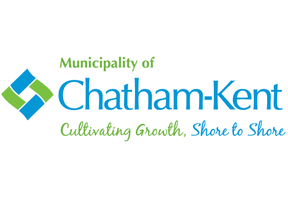Following a decade of decline, Chatham-Kent’s population grew by 2.2 per cent between 2016 and 2021, census results released Wednesday by Statistics Canada show.

Following a decade of decline, Chatham-Kent’s population grew by 2.2 per cent between 2016 and 2021, census results released Wednesday by Statistics Canada show.
This advertisement has not loaded yet, but your article continues below.
The area had 104,316 residents in 2021, which was up from a population of 102,042 in 2016. This includes residents of Moraviantown.
Without Moraviantown, the municipality’s population is 103,988, a 2.3 per cent jump from 2016.
Chatham-Kent’s population last showed an increase with the 2006 census, when there were 108,589 residents. The area now has slightly more residents than in 2011.
“For a community to have a decrease in population for over 10 years and to have that reversed, that’s really significant. That’s not an easy thing to do,” Don Shropshire, Chatham-Kent’s chief administrative office, said in an interview.
“Even with COVID and some of the stressors that has put on certain sectors, we’re still seeing record building growth.”
Ina statement, Mayor Darrin Canniff said the increase wasn’t a surprise.
“Residents and investors are discovering the great things Chatham-Kent has to offer,” Canniff said. “Our trends in new construction and investments suggest this growth will continue in the future.”
Bruce McAllister, general manager of community development for the municipality, said Chatham-Kent grew by just under 0.5 per cent per year between 2016 and 2021. He said he expects the municipality to continue growing at this rate “for years to come.”
“We have been busy promoting Chatham-Kent as great community to live and invest in,” he said in a statement. “We are seeing people moving to Chatham-Kent for the lifestyle, affordability and the realization that they can work from here because we are more connected to the world than ever before.”
This advertisement has not loaded yet, but your article continues below.
The province outpaced Chatham-Kent overall, growing by 5.8 per cent.
Chatham proper saw most of the growth. The census reports 45,171 residents, up 1,621 people from 43,550 in 2016.
Wallaceburg added 225 residents to a population of 10,323, while Blenheim now has 4,487 residents, an increase of 143.
Wheatley, now with 3,060 residents was Chatham-Kent’s fastest growing community, with a 6.7 per cent increase to its population. Wheatley is now larger than Ridgetown, which saw the greatest drop of 205 residents.
Tilbury remains the third-largest community in Chatham-Kent with 4,687 residents, though its population dropped slightly by 1.7 per cent. Dresden’s population also dropped slightly to 2,401.
Smaller communities like Thamesville, Highgate, Erieau and Erie Beach saw losses of fewer than 100 people, while Bothwell added 52 people.
Chatham-Kent’s overall population density is 42.4 people per square kilometer, while Chatham proper has 1,447.4 people per square kilometer.
Shropshire credited the municipality’s community improvement plan for some of the growth. The strategy gives incentives to developers who build a large number of residential units or invest a significant amount into an industrial project that would employ people.
He said they heard from developers that the cost of building new units in Chatham-Kent was similar to the cost in London or Toronto, even if there were some savings on the land. Since Chatham-Kent has a lower cost of living, developers wouldn’t receive the same level of return through rent prices as they could in other communities, Shropshire said.
This advertisement has not loaded yet, but your article continues below.
“It (the CIP) provided more of a leveling of the playing field and encouraged people to say, ‘Great, we can invest here. We get a good deal,’” he said. “The long-term benefits to our community is that we’re able to attract and house more people, and that’s exactly what we needed to stimulate the economy.”
Shropshire said the population growth should have a positive effect on the municipality’s tax base.
“The sweet spot for any municipality is where you can have an increase in the population or the assessment so that the cost of running the municipality gets spread across a larger number of taxpayers,” he said. “The burden is less on the individual taxpayer.”
Statistics Canada will release additional census data throughout the year.
Chatham-Kent’s population by community
- Chatham – 45,171
- Wallaceburg – 10,323
- Tilbury – 4,687
- Blenheim – 4,487
- Wheatley – 3,060
- Ridgetown – 2,797
- Dresden – 2,401
- Bothwell – 908
- Thamesville – 774
- Erieau – 363
- Highgate – 299
- Erie Beach – 153
